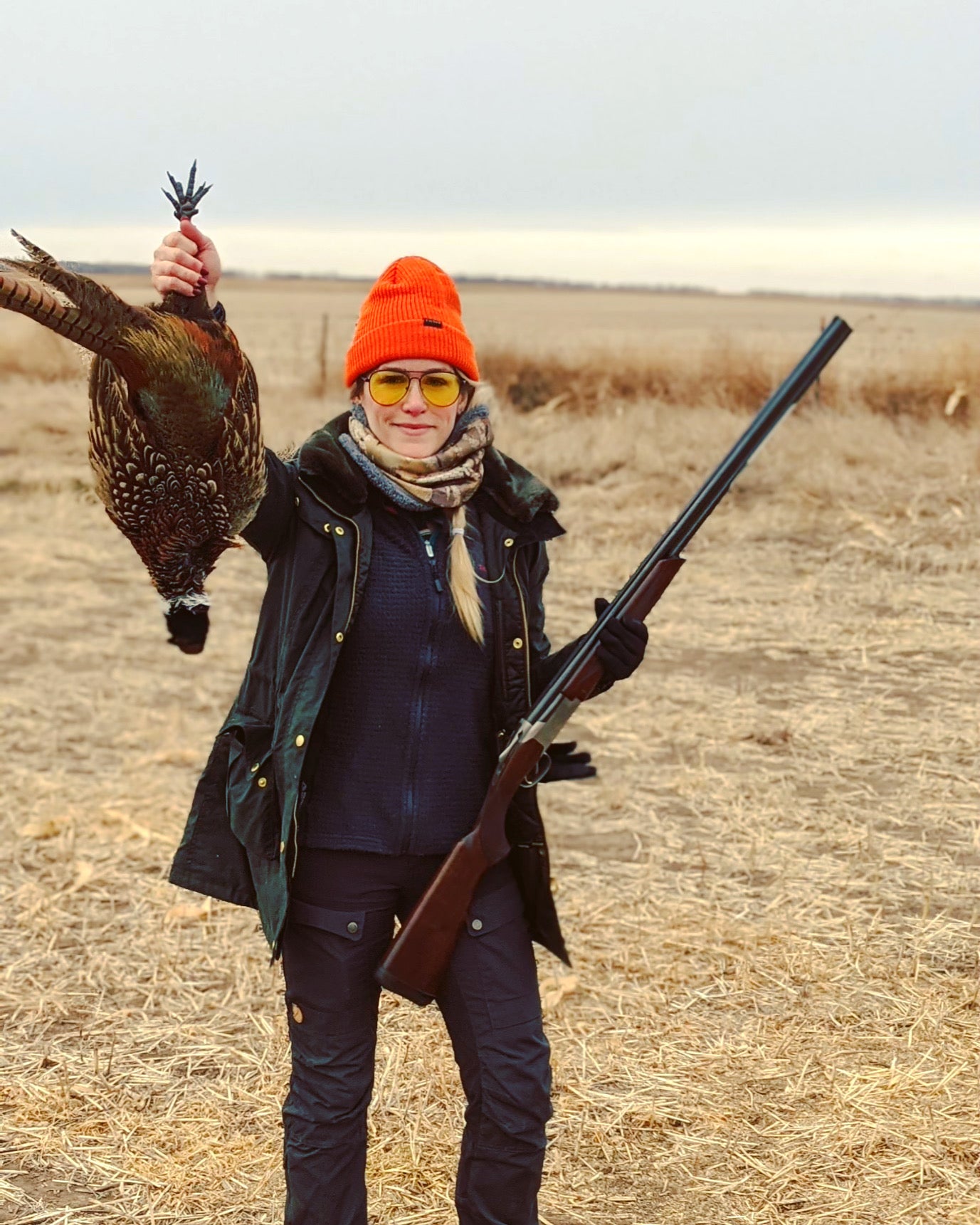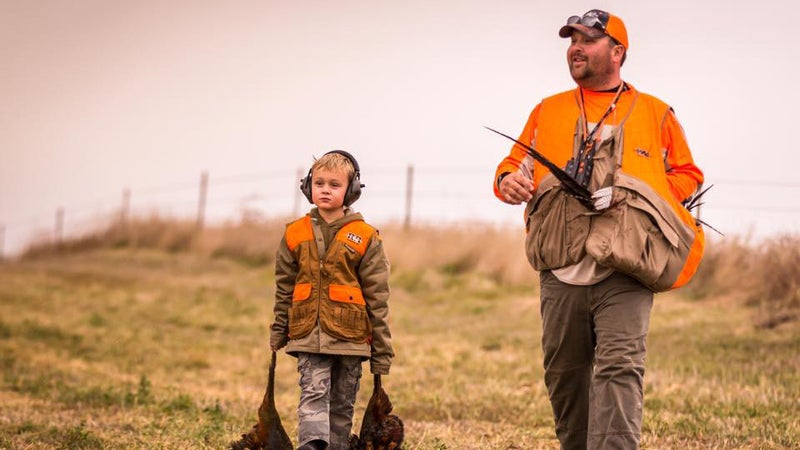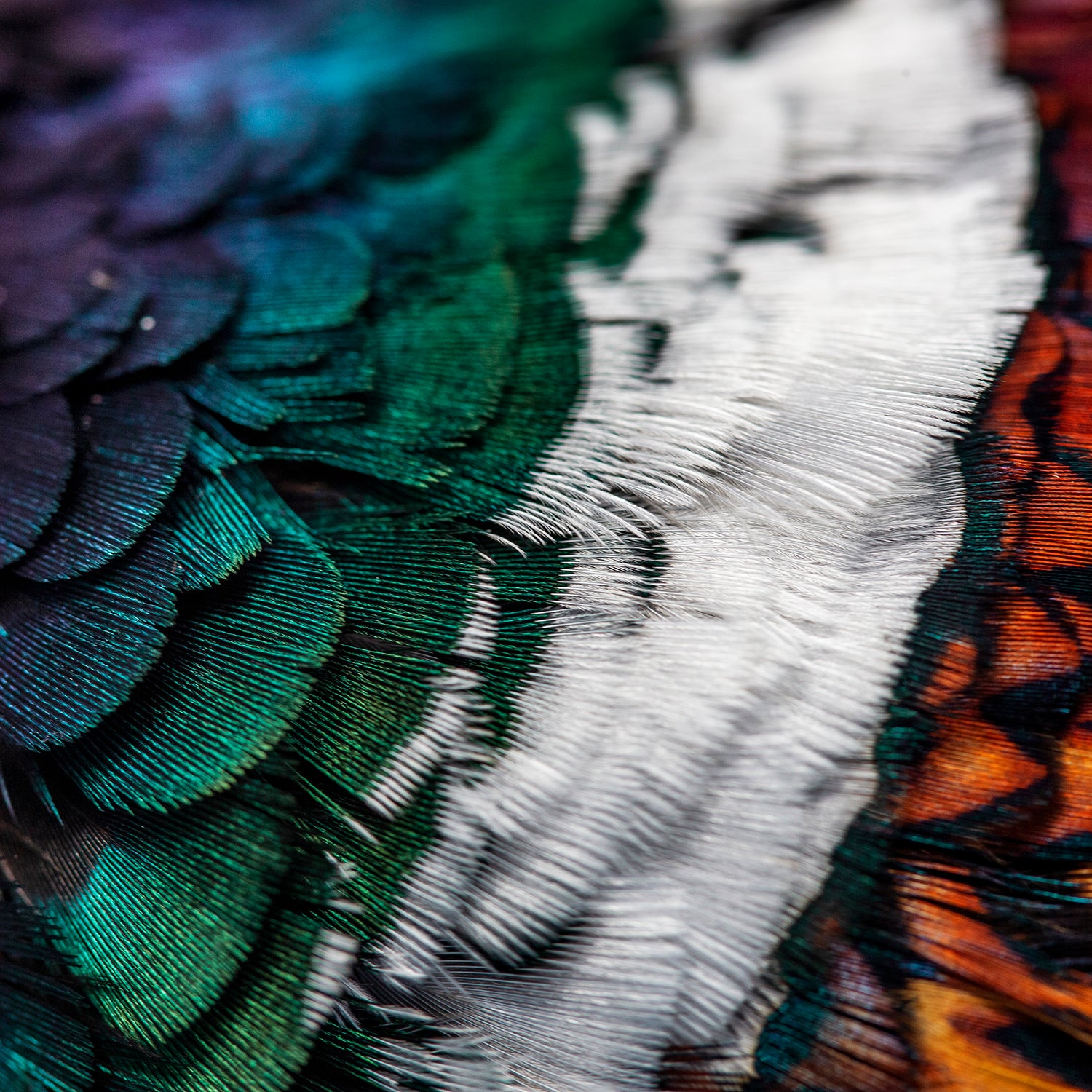For my 40th birthday, in December, I asked my wife, Virginia, for something special. I wanted her to take advantage of the hunter-education classes that had moved online due to the pandemic╠řto obtain her first hunting license╠řso she could╠řjoin me in the field.╠ř
Hunting is a passion of mine. ItÔÇÖs fun,╠řit puts╠řhealthy╠řmeat on our table, and I enjoy the challenge and tradition. But most of all, I love wild animals, and participating in the sport is the most meaningful way to save them.╠ř
Because individual hunters contribute significantly to conservation, the most powerful thing any of us can do for the cause is╠řrecruit additional hunters. And the most╠řeffective way you can instill future commitment from a first-timer is to ensure that their first hunt is a success.╠řBut my birthday falls on December 15ÔÇöwell after the end of╠řgeneral hunting seasons. And since we werenÔÇÖt yet vaccinated, I needed to find a hunt with plenty of animals and opportunities, yet╠řone that was safe╠řand responsible for us to participate in.╠ř
A friend recommended╠ř, a ranch in Seneca, South Dakota,╠ř650 miles away from our home in Bozeman, Montana. Due to the pandemic, we opted to drive, and the owner assured me his property was╠řfollowing Centers for Disease Control and Prevention guidelines. Plus,╠řthere╠řhad been so many cancellations over the past season that╠řthe preserveÔÇÖs pen-raised birds were still plentiful. More importantly, R&R is a prime example of the successful partnership between private landowners, taxpayers, hunters, and nonprofit organizations that uses pheasant hunting to restore wildlife habitat across the country. Not only would Virginia and I have ample opportunities to find the birds, but it would be a perfect chance for her to╠řget her hands dirty in the pursuit of wildlife conservation.
Where Are Pheasants From?
Pheasants are native to China╠řbut were introduced to Europe by the Romans. ItÔÇÖs thought that pheasants may have arrived in England , where they decorated the gardens of the wealthy. The advent of firearms╠řand╠řthe economic means for leisure time popularized bird hunting in England during the 1700s, so╠řgamekeepers began breeding the birds. Today, bird hunting in England is synonymous with the pheasant, and╠řaround of them are released there each year.╠ř
Americans who hunted pheasants in the United Kingdom sought to . But it wasnÔÇÖt until the American consul general in Shanghai, Owen Denny, shipped 38 pheasants to his brotherÔÇÖs farm in OregonÔÇÖs Willamette Valley in 1881 that the breeding of pheasants╠řbegan in America. Ten years later, on the opening day of AmericaÔÇÖs first-ever pheasant season, hunters shot 50,000 birds. That success prompted would-be pheasant hunters to introduce them╠řacross much of the rest of the country.╠ř
A prey species, pheasants try to stick to cover╠řand will run away from threats through that cover╠řunless startled. When they can be convinced to take off, they fly at speeds of up to 60 miles per hour. The challenge those speeds represent explain the popularity of pheasant hunting.╠ř
Pheasants, which are about the size and shape of a chicken,╠řeat insects╠řand seeds╠řand live in mixed habitats like brushy meadows, hedgerows, marshes, and areas where woods╠řand fields meet. In other words, they prefer places that look like much of the agricultural Midwest. The first pheasants were introduced to South Dakota in 1908, and by 1936, the state had an estimated╠řpopulation of 12 million of them.╠ř
One of the reasons for the birdÔÇÖs success is that , even in seasons where the take exceeds one╠řmillion birds in a single state. In fact, hunters could harvest as much as 93 percent of pre-hunt roosters╠řwithout hurting the population as a whole,╠řaccording to╠ř, a nonprofit dedicated to conserving╠řwildlife habitat.╠ř
ThatÔÇÖs because hunters only╠řshoot roosters, not hensÔÇöin flight, itÔÇÖs easy to distinguish the brightly colored, long-tailed roosters from the drab, short-tailed femalesÔÇöand each male impregnates an entire harem of females before hunting season begins. In turn, each of those hens lays seven to fifteen╠řeggs.
Even without hunting, pheasants donÔÇÖt live long. Predators like foxes, raccoons, skunks, feral cats, hawks, and owls all feed on them. But╠řthe biggest source of pheasant mortality isnÔÇÖt humans or natural predators, itÔÇÖs simply winter weather. According to Pheasants Forever, with mild weather and good habitat, winter survival rates can be as high as 95 percent. In a worst-case scenario, with severe weather and poor habitat, survival rates can fall to 20 percent.╠ř
Which brings us to╠řwhy shooting an introduced, pen-raised, non-native species helps save American wildlife.╠ř

Farming and Habitat
Farming is a fickle, challenging business that is often╠řhighly dependent on╠řweather, so farmers are incentivized to maximize profits in good years by chasing the highest yields per acre of land possible.╠řIn 2019, a crop like corn could, in a best-case scenario on a high-yield farm, be expected to pay╠ř$738 per acre, with an additional $80 per acre╠řadded by federal aid programs, for a total possible revenue of . Farmers canÔÇÖt add growing seasons, and the price of their crops is out of their control. So the best way for farmers to increase revenue is to plant as much of their lands with a╠řcrop that produces the highest yields.╠ř
ThatÔÇÖs whatÔÇÖs led to modern, monolithic farming practices, where entire regions are turned over to a single crop. If corn grows best in a given region, then to maximize revenue, every inch of every╠řacre of every farm in that regionÔÇöand in a place like Seneca, South Dakota, nearly every acre is a farm acreÔÇöneeds to be planted with corn. Factors like interest rates, commodities prices, and trade policies make the picture IÔÇÖm painting here much more complicated in the real world, but you get the idea: generally speaking, whatÔÇÖs good for farming╠řis bad for wildlife.╠ř
Turning every square inch of land over to a single crop decimated wildlife habitat across the Midwest. And wildlife, including the pheasant, began to disappear. From a high of 16 million birds in 1945, South DakotaÔÇÖs pheasant population fell to a low of in 1976. And with the pheasant, other wildlife disappeared, too. The population of deer in the state fell from in the 1930s to around 200,000 in the 1980s.╠ř
It also turns out that factors outside a farmerÔÇÖs controlÔÇöthose pesky interest rates and commodities pricesÔÇöcan swing fortunes against them, especially when theyÔÇÖre invested so heavily in producing a single one of those commodities. ThatÔÇÖs what led to of the 1980s, which for a time threatened the future of independent farming in this country.╠ř
One of the ways the Reagan administration tackled the╠řcrisis was with something called the ╠ř(CRP). First authorized by the Food Security Act of 1985, it uses taxpayer dollars to pay farmers not to farm certain parts of their land, attempting to address problems like wildlife habitat, erosion, and even surplus commodity stocks in one fell swoop.╠ř
Today╠řthe CRP program protects . Rates vary╠řfrom $10 to $300 per acre, depending on the location and ecological importance of that acre, with the average payment coming in at .╠řThatÔÇÖs been enough to convince a lot of farmers not to develop marginal croplands, but it only amounts to about 10 percent of the per-acre revenue thatÔÇÖs possible with high-yield practices.╠ř
The CRP budgets have also become a political football over the years. As farmland slowly returned to natural habitat after╠ř1985, pheasant numbers slowly rebounded. By 2007, the CRP program covered 1.5 million acres of land in South Dakota, and the wild-pheasant population reached . As CRP rates fell, though,╠řsome farmers were forced to start farming land formerly protected under the program. In 2019, only were enrolled in the CRP program, and pheasant numbers in the state fell to╠ř7.7 million wild birds.╠ř

On the Ground
ÔÇťCRP doesnÔÇÖt pay for trees,ÔÇŁ says Sal Roseland, who started converting his multigenerational╠řfamily farm╠řinto a pheasant preserve in 2002. R&R, the South Dakota ranch that Virginia and I visited in╠řDecember,╠řis now one of the most successful operations in the state. Roseland╠řguided us on a two-day hunt across his 18,000-acre property.╠ř
Pointing out the various features that make up good pheasant habitat, he explained that while pheasants nest in dense grass and crops,╠řand use places like cattail sloughs for cover, much of that can become inaccessible to the birds in winter╠řif the land╠řgets blanketed and flattened by heavy snowfall. In addition to reduced CRP acreage, several severe winters since 2007 have contributed to the decline in South Dakota pheasant populations.╠ř
The Roselands run cattle, which eat grass and grain. To develop good pheasant habitat, Roseland╠řconverted much of his ranch into wild grassland (that the cows are kept off of), left tree belts intact and╠řmarshes undrained, and planted crops like , which is one of the grains found in commercial birdseed. Not only does that provide a high-energy food source for the birds, but miloÔÇÖs thick, corn-like stalks are able to stand up to heavier weather than grass alone can, making it valuable cover╠řfor pheasants╠řand other wild animals.╠ř
Walking the R&R ranch, itÔÇÖs rare not to see a hawk, an eagle, or an owl flying somewhere in your field of vision. Head into heavier cover, and RoselandÔÇÖs dogs kick up nearly as many deer as they do birds. The marshland is dotted by muskrat nests. This╠řnatural ideal stands in contrast to most other farmland on the Great Plains, where rows of crops stretch from one horizon to the other, choking out any other form of life.╠ř
The Roselands care about wildlife, but what enabled╠řthem to create this haven╠řwasnÔÇÖt just good intentions, it was╠řgood income. A two-day hunt at the ranch costs $1,500 per hunter, and Roseland╠řsays that he and his wife, Kelly, host about 800 hunters a season. On top of the CRP payments, that amounts to╠řan additional $66 per╠řacre, which is still not enough to offset the money that could be made from just plowing everything under.╠ř
Fortunately, additional help is available. Seeds for RoselandÔÇÖs milo are donated by a local supplier, who works with . Since 1982, that organization has created or enhanced 15.8 million acres of wildlife habitat across North America. Made up of local chapters, the organization funds thousands of annual projects, each responding╠řuniquely to local╠řneeds. On RoselandÔÇÖs ranch, that might mean milo seeds; elsewhere, it might be the outright acquisition of property╠řfor the purpose of rehabilitation╠řand public access. Pheasants Forever has worked with public-land-management agencies to set aside 187,000 acres of protected land for public access, and 138,000 people╠řpay annual membership fees in the organization that start at $35 per year. of those members are hunters. Because good pheasant habitat is a healthy, natural ecosystem, Pheasants Forever has╠řalso invested in programs like ╠řand across the Midwest, a crucial╠řmonarch-butterfly migration region.╠ř
None of that money would exist if there werenÔÇÖt birds to shoot.
Wild Versus╠řRaised Birds
Every pheasant on this continent is a result of human introduction. The initial push in the late 19th and early 20th centuries resulted in populations that now propagate in the wild. But╠řas the numbers of those╠řbirds collapsed in the 1960s and 1970s, state governments sought to sustain hunting activity, and╠řnotably╠řthe economic boon it╠řbrings to wildlife conservation, by raising and releasing large quantities of pheasants╠řbefore each hunting season.╠ř
Those early programs fostered hunting opportunities, but raising birds in covered pens where they were safe from predation╠řand fattened up╠řon easy, rich food sources didnÔÇÖt exactly produce good fliers. Hunters dubbed the penned birds ÔÇťditch chickens,ÔÇŁ and complained they╠řjust werenÔÇÖt any fun to chase.╠ř
That changed in the 1980s, when private breeders began experimenting by╠řcrossbreeding different varieties of pheasants and improving the conditions in which they were raised. One of the largest pheasant breeders, Bill MacFarlane, calls his birds╠řÔÇťÔÇŁ and says theyÔÇÖre╠řÔÇťfull of pep and a sense of urgency.ÔÇŁ
What RoselandÔÇÖs customers pay for when they visit R&R is opportunity. While╠řfinding a pheasant on public land can take a considerable amount of╠řhiking and involves no sure outcomes╠ř(not to mention a daily limit of three birds if you are lucky),╠řhunters walking RoselandÔÇÖs ranch will have plenty of chances to take a shot╠řand no limit on the number of birds they can bag.╠ř
That is a perfect formula for a successful first hunt. When Virginia and I visited R&R in December, temperatures were hovering in the single digits, and high winds combined with light precipitation to blow ice crystals at our exposed faces. That late in the year, the remaining birds were the wariest ones, flying away well outside of shooting distances. Working with Roseland, we eventually developed a strategy: Virginia and I would walk far ahead╠řof Roseland and his dogs, hopefully surprising the birds into flight as they ran away from the dogs╠řand into us. ╠řThat worked. We drove home after the second day with 30 birds in our coolerÔÇömore than enough to keep making meals of╠řthem three months later.╠ř
Is that too easy? ,╠řand there are more folks hunting╠řon public land╠řin South Dakota than╠řon private land. But╠řacross the state, there are a couple hundred other preserves. And╠řjust like RoselandÔÇÖs, those preserves are providing wild habitat on private land, while the hunters on them are helping╠řpay for conservation on the stateÔÇÖs public land. ╠řin South Dakota, hunters on private land╠řshot 283,254 birds, while 828,700 pheasants were shot on public land.╠ř
Three Billion Birds Gone
Are pheasants invasive? that they create competition for native species, but they do fill a valuable role in our ecosystems as a prey species. More importantly, the money they bring in from hunters is being used to fight widespread habitat loss.╠řIn the past 50 years, 25 percent of AmericaÔÇÖs native birds have disappeared. Since 2009, some 53 million acres of native grasslandsÔÇöequivalent to the size of KansasÔÇöhave vanished from the Great Plains.╠ř
In response, Pheasants Forever has kicked off to create nine╠řmillion acres of new wildlife habitat across the country╠řand to acquire 75,000 acres for permanent protection and public access. How? The organization is trying to create 1.5 million new hunters.
One of those new hunters is my wife. Before visiting the RoselandsÔÇÖ ranch, Virginia was squeamish about the idea of shooting an animal, and nervous that her experience at gun ranges wouldnÔÇÖt translate to safety in the field. But after just two days chasing birds, sheÔÇÖs hooked. WeÔÇÖre already making plans to hunt public-land birds here in Montana together this fall, and are hoping we can make the trip to R&R an annual birthday tradition. And all the additional license fees, hunting-equipment sales, organization memberships, and private-land revenues Virginia will generate across her lifetime will fund habitat restoration and protection, as well as╠řhelp protect the avian species that live across our country. Not bad for one birthday.╠ř


